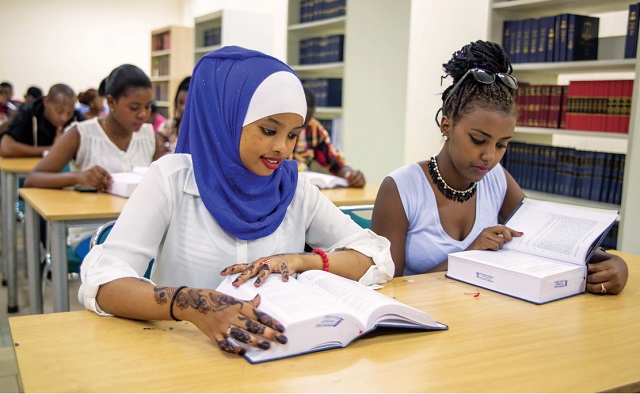
9% recovery rate threatens government support to needy bright students
Kampala, Uganda | MUBATSI ASINJA HABATI | Maurice Muhindo was excited to get a study loan from the Government of Uganda to finance his degree in secondary education at university under the Higher Education Students’ Financing Board. Muhindo was even happier when he became the first member of his family to get a university degree. Although his one-year loan payment grace period ended in 2019, Muhindo’s debt remains.
“I am struggling to pay back the Shs6.5 million loan given that the private secondary school where I teach does not pay me that much. The outbreak of Covid-19 pandemic which left schools closed for nearly two years has only made it worse. I hope the government will understand my situation in paying back this loan,” says Muhindo.
At the age of 26, Muhindo is among the 12,000 Ugandan students that have benefited from the students’ loan scheme since it was launched in 2014. The loan scheme which is managed by the Higher Education Students’ Financing Board (HESFB) on behalf of Government finances the education of needy but bright students pursuing science-related degrees, diplomas and selected certificate courses at 11 public universities, 11 private chartered universities and some higher institutions of learning.
Since 2014, the budget allocated to HESFB has averaged Shs5 billion per financial year yet the number of applicants who want to benefit from the loan scheme keep surging. As a result, each time the leaders of the Higher Education Students’ Financing Board (HESFB) appear before parliament they ask for more funding.
In 2018, the board asked the parliamentary Education Committee to increase its funding. By then the HESFB executive director told MPs that his board had planned to take on 3,000 new students in 2019 but only Shs4.34 billion had been allocated in the proposed budget leaving a funding gap of Shs8 billion.
“The Board recommends that Government increases funding to the Students’ Loan Scheme to enable it to double the number of Loan beneficiaries annually for the next three years. For financial year 2018/2019, we propose to take on at least 3,000 new students and double the number in the subsequent year’s thereafter,” said Michael Wanyama, the HESFB executive director then told legislators.
Fast forward in 2022, while appearing before the parliament’s education committee, HESFB asked for additional Shs6.64 billion to supplement the Shs5.75 billion allocated to it in the 2022/23 financial year. The reason is to support at least 3000 needy students access higher education through the loan scheme.
With the current funding, the HESFB can only offer loans to 1,419 students leaving out many other deserving students. This year, the board managed to extend loans to 1,530 students because parliament had previously increased its budget by Shs500 million. The extra fund was used to give study loans to 120 students in their final year at various institutions of learning to help them complete their studies.
Because of staggered opening of higher institutions of learning, the board issued loans for students this year in two lots. The first lot awarded 920 students who shared Shs3.8 billion. Some 4,897 students had applied. Lot 2 attracted 1,226 applicants and only 610 students were awarded loans sharing Shs2.25 billion.
“It is without doubt that we need more resources (money) to support the increasing number of applicants,” said Prof. Callisto Locheng, chairperson board for HESFB.
More money needed
According to data from the United Nations cultural Organisation (UNESCO), governments around the world are struggling with the increasing student loan debt, “as the share of college-aged people enrolling in vocational colleges and universities has doubled from 20% to 40% in the past 20 years”. In Uganda, a consolidated Auditor General report for 2021 says “the statistics of students’ beneficiaries from the loan scheme over the last five years indicated that on average only 42% of the qualifying students access the facility.”
The Auditor General report noted that “whereas the recoverable amount stood at Shs2,568,798,065 as at the end of Financial Year 2019/2020, only 231,003,090 had been recovered representing a recovery rate of only 9%.”
Despite the fact that it is performing not so well in recovering loans offered to students, the board is still rallying for more funds and has come up with suggestions like advising government to channel part of the students it sponsors at universities under the merit scheme to the HESFB. This recommendation if adopted would be a policy shift in the financing of merit students at public universities and other tertiary institutions.
“If only half of the Fund is relocated to the Students’ Loans and implemented in phases, the already existing fund shall be utilised by more students when re-allocated. Alternatively, Government could consider cost sharing/partial scholarships being awarded to merit students at all levels of Higher Education Support and this is a worldwide practice,” said Wanyama.
Since its launch in 2014, the students’ loan has supported over 12,000 students from needy backgrounds. Of these at least 3,000 have completed their studies and finished the one-year grace period of paying back the loan.
The student loan comes with a 7% interest rate. Students who have benefited from this loan scheme are spread across 11 public universities, 11 private universities and 36 training programs. But of some 3,000 who have completed their studies, only 30% are on track to repay their loans, says Bob Ambrose Nuwagira, the board’s spokesperson.
Since its inception, the amount of money officials need to recover exceeds Shs32 billion. This low loan recovery rate could jeopardize the entire programme.
For the Higher Education Students’ Financing Board to ensure continuity of the fund, beneficiary students must pay back the loans. To push for students’ loan repayment, the board is using the law to urge employers to disclose information about their workers who have studied using the government’s loan. Failure to do so is an offence which attracts up to 10 years imprisonment.
Michael Wanyama, the Executive Director, HESFB called upon employers to support the process of loan recovery and join in sensitizing others. “We continuously encourage employers to support the loan recovery process and enable the scheme to have a continuous impact it has already had on the lives of many beneficiaries.
The maximum repayment period is twice the study period in addition to the grace period of one year. There is also room to negotiate favourable repayment terms, including early repayments. Early Repayment comprises any amounts paid back to the Board during the period of study and before end of the Grace Period. Amounts paid within this period does not attract Loan Retention Fee/interest. This also facilitates a clean record with the Credit Reference Bureau.
“In line with these provisions and throughout sensitization programmes, the board has been building a repayment culture by encouraging early repayments and this has yielded some positive results government has supported over 8000 students in various institutions to pursue student loans in the studies of Science, technology and engineering,” said Bob Nugira, the head of communication HESFB.
The government started giving loans to bright but poor students in 2014/2015 academic year, especially in the science disciplines, except for people with special needs who can be considered for courses on humanities for the loan.
According to the Higher Education Students Financing Act, 2014, repayment of the loan shall be charged on the income of the person who received the loan. Repayment starts a year after the beneficiary has completed studies, whether employed or not.
The Act provides for a six-month jail sentence or a fine of at most Shs1 million to beneficiaries who try to default after graduating. Employers who fail to remit a specified percentage off the beneficiaries’ salaries to service the loan also face 10-year jail sentence or a fine of at most Shs10 million.
****
 The Independent Uganda: You get the Truth we Pay the Price
The Independent Uganda: You get the Truth we Pay the Price



